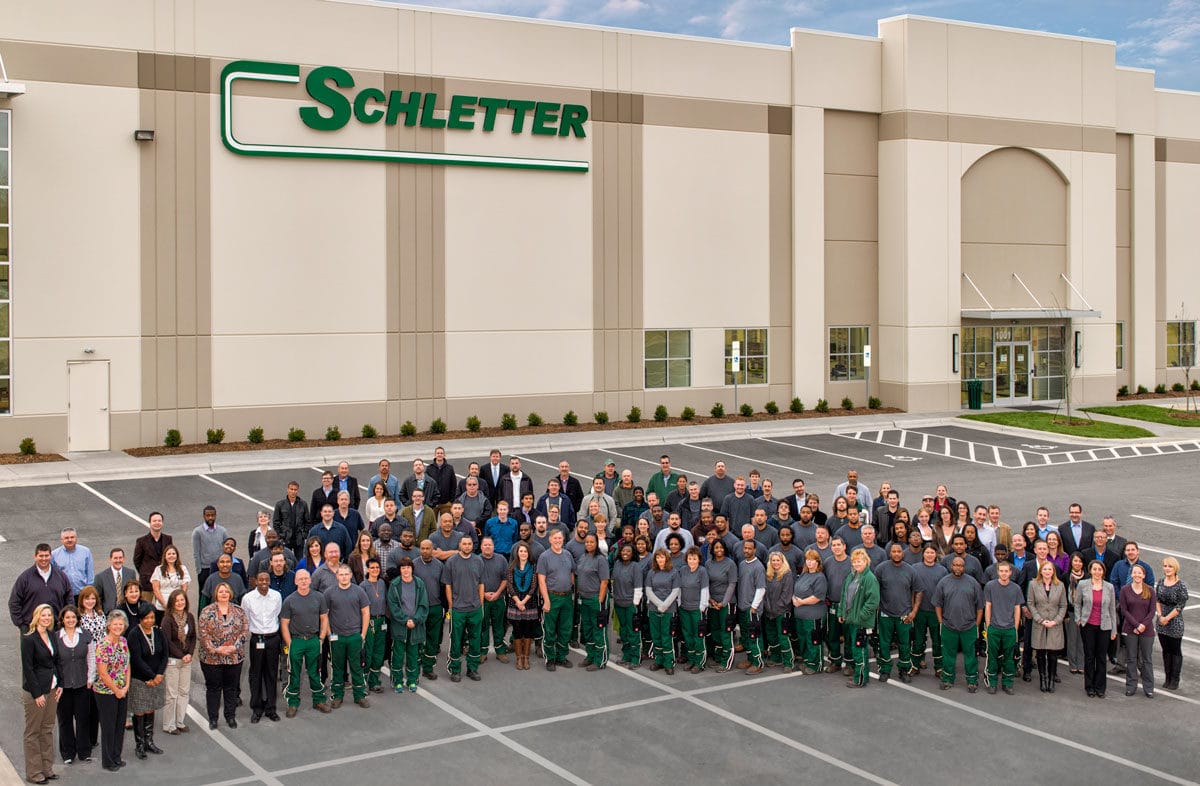A year and change after its bankruptcy, Schletter is back. The mounting systems maker has announced that it is moving its North American headquarters from Shelby, North Carolina to the Charlotte metro area, about an hour away by car to the East.
In a press release Schletter cites the advantages that Charlotte is bigger, is an air hub with flights to Europe, and is closer to both the company’s customers and transportation lines to get its products moved around the country. But what it doesn’t mention is that Charlotte also doesn’t have a big factory that another company is occupying associated with it.
It’s not clear exactly what transpired legally and financially regarding Schletter’s factory in Shelby over the course of the U.S. subsidiary’s Chapter 11 bankruptcy, the loose ends of which are still being tied up. And despite promises that new capital might save the factory, according to local press the Shelby plant stopped operations in April 2018, and less than a month ago an auction company sold off the heavy machinery, office equipment and other items.
Trade troubles?
In the new Charlotte metro location Schletter will host sales and distribution activities, but not manufacturing. Schletter has revealed that it is still making products at its facilities in China and Germany, with suppliers in Turkey and Eastern Europe.
The company further cites the flexibility of its global supply chains. “With our global footprint, we also have various options when it comes to import duties in order to find the most cost-effective solution for our customers,” stated Oliver Renzow, the head of Schletter’s North American operations.
Despite such allusions to trade problems, it is unclear what role the various duties on steel and aluminum have played in both the business difficulties of Schletter’s U.S. operations, or its decision to quit manufacturing in North Carolina.
In addition to the global Section 232 duties on steel and aluminum, the Trump Administration is currently pursuing an anti-subsidy trade case covering finished structural steel products from China and Mexico, which may include parts used in trackers.
From Europe, with trackers
This latter case may hold the key. For years the U.S. utility-scale solar market has been moving from fixed-tilt mounting to trackers in more and more locations, and in its press statement Schletter revealed that a key product for its North American market will be a new tracker system which the company launched last year, and which it has already installed in Europe and Africa.
This tracker is currently going through the UL certification process, and Schletter expects a resolution by the end of the third quarter. “Our customers in the US and Canada have already shown great interest with respect to several different projects,” states Renzow. “We have already reached an advanced stage of negotiations with project developers and their financial partners about an order volume totaling several hundred megawatts.”
Schletter also notes that it will continue to offer both fixed-tilt and rooftop products in North America.
This content is protected by copyright and may not be reused. If you want to cooperate with us and would like to reuse some of our content, please contact: editors@pv-magazine.com.









By submitting this form you agree to pv magazine using your data for the purposes of publishing your comment.
Your personal data will only be disclosed or otherwise transmitted to third parties for the purposes of spam filtering or if this is necessary for technical maintenance of the website. Any other transfer to third parties will not take place unless this is justified on the basis of applicable data protection regulations or if pv magazine is legally obliged to do so.
You may revoke this consent at any time with effect for the future, in which case your personal data will be deleted immediately. Otherwise, your data will be deleted if pv magazine has processed your request or the purpose of data storage is fulfilled.
Further information on data privacy can be found in our Data Protection Policy.